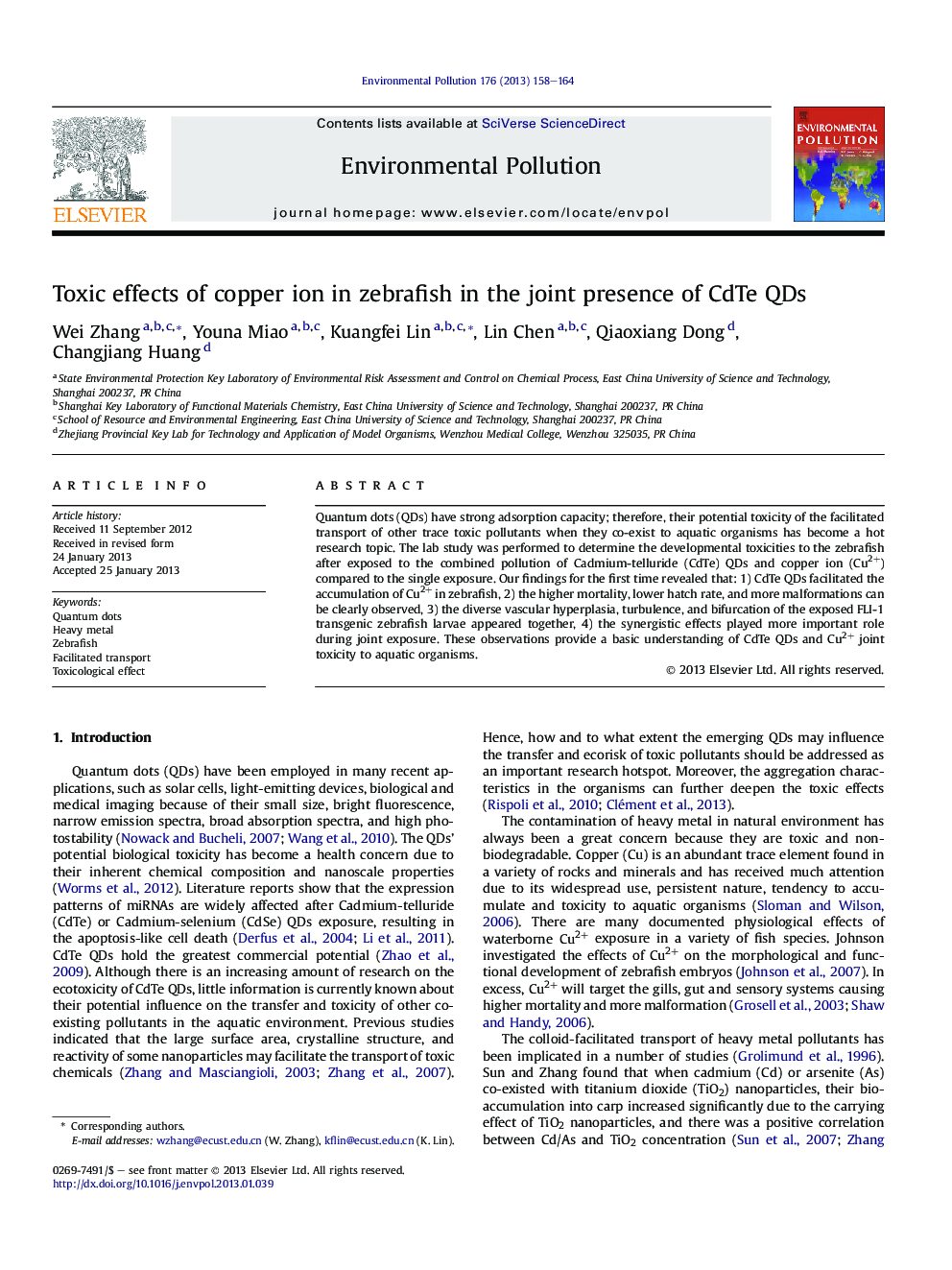| کد مقاله | کد نشریه | سال انتشار | مقاله انگلیسی | نسخه تمام متن |
|---|---|---|---|---|
| 4424525 | 1619196 | 2013 | 7 صفحه PDF | دانلود رایگان |

Quantum dots (QDs) have strong adsorption capacity; therefore, their potential toxicity of the facilitated transport of other trace toxic pollutants when they co-exist to aquatic organisms has become a hot research topic. The lab study was performed to determine the developmental toxicities to the zebrafish after exposed to the combined pollution of Cadmium-telluride (CdTe) QDs and copper ion (Cu2+) compared to the single exposure. Our findings for the first time revealed that: 1) CdTe QDs facilitated the accumulation of Cu2+ in zebrafish, 2) the higher mortality, lower hatch rate, and more malformations can be clearly observed, 3) the diverse vascular hyperplasia, turbulence, and bifurcation of the exposed FLI-1 transgenic zebrafish larvae appeared together, 4) the synergistic effects played more important role during joint exposure. These observations provide a basic understanding of CdTe QDs and Cu2+ joint toxicity to aquatic organisms.
► CdTe QDs facilitated the accumulation of Cu2+ in zebrafish.
► After exposure zebrafish had lower hatch rate and more malformations.
► Zebrafish exposure elicited a higher mortality.
► Abnormal vascular in FLI-1 transgenic zebrafish larvae appeared.
► The synergistic effects for the two chemicals played more important role.
Journal: Environmental Pollution - Volume 176, May 2013, Pages 158–164